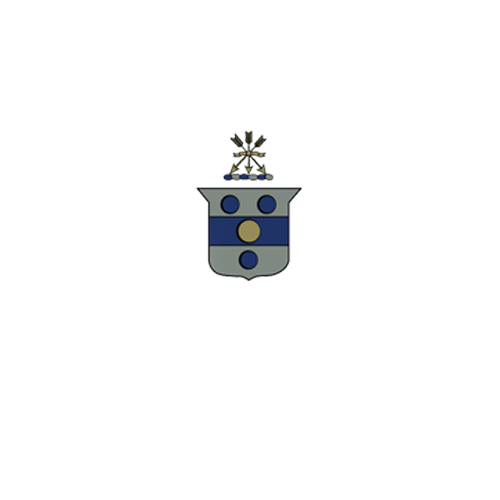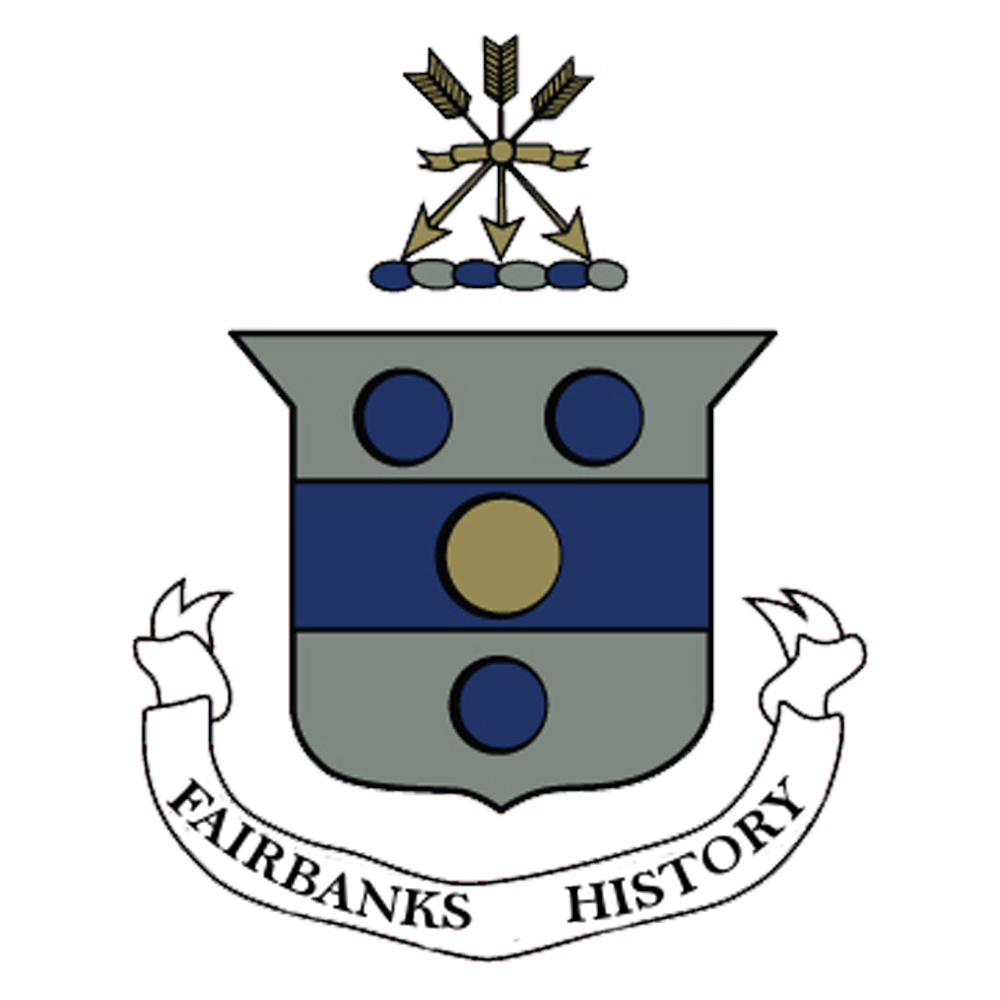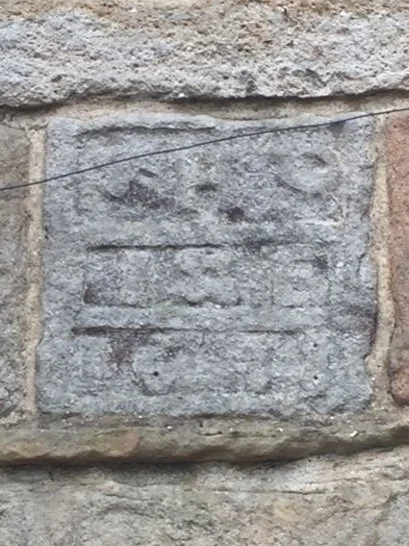Datestone of Middle Hague Farmhouse in Thornton in Craven: The Fairbank/s Connection
Datestones in Early English Architecture
Datestones on old buildings can both, tell us about our heritage or mislead us if we don’t understand the old markers found in northern England.
A datestone is a marker, including a date and initials, made of sandstone. There are many different types. Some are ornate. They are located over doorways, barn entrances, mantles, and archways.
They were considered expensive, taking seven days to create with fire-sharpened chisels. Authors Michael and Mary Slater discovered and wrote about datestones from 1602-1900 in the north western Yorkshire area. Their article, Datestones on Old Buildings in Craven Bowland and Upper Wharfedale, about their research of datestones in the area of northern England. In the early 1600s, datestones can be found in other areas, including Sowerby where a large group of Fairbank lived in the 13th through 17th century.
Datestones and Initials
According to the Slaters most datestones they studied have initials, two or more, and a date. They caution to read the numbers and initials carefully, especially “1” verses “I”, and “0” as compared to “6” or “9”. To understand England locations and names you must also understand the Old English language. The initial “I” can stand for “I” as in Isabel or for a “J” as in John. “I” and “J” were interchangeable in early years. There was not even a letter “J” before 1633.
Sometimes the surname Initial was found with each given name initial. Some times the letters run together in a confusing manner or are not always easily read. The Slaters give a good explanation of the use of initials.
John Fairbank and Family at Haigh in Thornton in Craven
Thanks to the excellent research of Ruth (Fairbanks) Joseph and James Swan Landberg which was published in the New England Historical and Genealogical Register volume 166 in 2012, we know that John Fairbank, Jonathan’s father, and his older sons were involved in land transactions at the Hague in Thornton in Craven, England.
Hague, can also be spelled as Haigh or Haugh. In old English, Hague means: by a hedged or fenced enclosure. The Haigh in Thornton in Craven is now spelled Hague. The name is used in various areas around England; it is not specific to Thornton in Craven. In fact, the area once known as Platts near Sowerby is now known as Old Haigh End. We will visit there in Part Two of Our Self-Guided Tour of West Yorkshire with Focus on the Fairbanks Family
John Fairbank and his older sons started buying land in the Hague around 1612. The first land purchase by
Fairbank in the Hague was made by John and Ellen (Parker) Fairbank from George and Margaret Parker, the parents of Ellen, John’s third wife.
A George Fairbank, believed to be John’s son by his first marriage, purchased buildings and land in 1616 and 1617 in the Haigh (Hague) of Thornton in Craven.
In 1617/18 John, believed to be the son of John Fairbanks also by his first marriage, is documented as purchasing land , etc. at Haigh in Thornton.
Two of the buildings, the Great Hague Farmhouse and the Middle Hague Farmhouse and Cottage, are considered as dwellings of some member of the John Fairbank family during the early 1600s.
A Datestone for a Fairbanks House:
Middle Hague Farmhouse and Cottage
Earby, Lancashire
The Middle Hague Farmhouse and Cottage is believed by the current residents to have been owned, built, or occupied by John Fairbank. This house is a Grade II listed building twenty-five miles north of Sowerby. In the time of John Fairbank. This structure, built without the portico. Based on land transactions, John and Ellen (Parker) Fairbank were possibly there in 1617 or 1618.
Though the documents are damaged, it is believed that Jonathan and Grace Fairbanks, the emigrants, gave birth to a daughter, Susan, in Thornton in Craven between 1625-1627. This would confirm that Jonathan and his family lived in the area, if not in one of the Hague houses.
To see the detailed description of the historic structures of this house, go to https://historicengland.org.uk/listing/the-list/list-entry/1272936?section=official-list-entry
The datestone of the Middle Hague Farmhouse, though worn, can be read. The top line has an H in the center with decorations at each side. The second line reads, “I” or “J”, flower, “E”. The last line has the date “1618” with the “16” slightly separated from the “18”. Based on The Slater’s research, we will try to understand the possible meaning of this datestone.
As an assumption, this datestone may stand for H as in Haigh (Hague), on the top line. On the second line, the initial “I” could stand for John. As mentioned earlier, “J” was not used much before 1633. The “E”, which is fairly clear, could stand for John’s wife, Ellen (Parker) Fairbank.
The last line or date is evident, 1618. It is not the date of marriage. John and Ellen Fairbank were married in 1598 in Burnley, Lancashire. The date could have been when the house was built, altered, or the date Fairbank moved in. They sold land and a barn in Carleton and Lothersden in 1613. They sold a large house and lands at the same location in 1617, the year before the datestone is dated.
More research needs to be done in the Thornton in Craven area to fully understand the occupation of the different members of the John Fairbank family there. I would like to thank the new owners of the Middle Hague Farmhouse and Cottage for preserving the structure that could very well be a part of our Fairbank family history and for sharing as much as they can with the descendants.
Other Date Stones
Datestone at Lord Nelson Inn
High Street SE 0426
Luddenden, Warley, West Yorkshire
The Lord Nelson was a private home located on a trade route and served as a 17th century coach house. You can find it adjacent to the St. Mary’s Church which was in the middle of the historical town of Luddenden, Warley Township. Warley is the location of both Jonathan Fairbanks and Grace Smith before they were married.
The Lord Nelson is now a grade II historic building, meaning it has retained some of its early architecture, but there have been substantial changes. Even with these changes, they have retained the datestone. You can find the description of the historic build architecture at https://historicengland.org.uk/listing/the-list/list-entry/1134506
Above a triangular-arched doorway at the Lord Nelson, the lintel is dated. A lintel is defined as a horizontal support of timber, stone, concrete, or steel across the top of a door or window.
The building was erected in 1634. Note the difficulty reading the date. The “6” could be mistaken for a “0” and the”4” is backward. The GCP stand for Gregory Patchett, the owner of the original house.
As an aside, the Lord Nelson became an alehouse in the mid-18th century when it was called the White Swan. The pub was a favorite of Bramwell Bronte, the only brother , of the Bronte Sisters. Charlotte, Emily and Anne are famous authors from the Yorkshire area.
Kershaw House
Luddenden, Warley Township
Luddenden Lane
The Kershaw House can be found close to the Lord Nelson Inn. It is a Grade I listed building from early 17th century and rebuilt in mid-17th century. Grade one means that there has not been substantial changes to the building. You can find the details of this building at https://historicengland.org.uk/listing/the-list/list-entry/1184572?section=official-list-entry
The datestone for this house, above the doorway, is enclose. It is inscribed “1650/TM AM” for Thomas and Anna Murgatroyd who owned it in 1650 and had it rebuilt. The date is difficult to read from wear of the stone. The “A” is not in the current customary form.
Touring West Yorkshire, the datestones give us an idea which buildings stood during the time period our ancestors lived in the Sowerby, Warley, and Thornton in Craven area.
Additional Datestones in the Sowerby Area
Above: Tillotson, Joshua (note the I) and Martha
Right: found on The Beck, house of Robert Tillotson
Thanks to Jason Ward, postal service worker in Triangle, for his generous help on many of these blogs and gathering information about the Fairbank and Gawkroger Platts families in West Yorkshire.
Note: 1630 mantle found in the Tillotson Cottage. The initials “I” and “T” are on either side. The cottage initially belonged to a John Gawkroger Platts.
Datestone over door “SL 1632 IL”
Sowerby, West Yorkshire, England
Thanks to Shawnee Fairbanks Korff for the Sowerby and Warley datestone pictures.
Next Up
I will be taking a trip to England with my sister, Shawnee Fairbanks Korff, at the end of July 2022. We will be watching for other datestones on important buildings that stood during Jonathan and Grace Fairbanks’s time in England. When I return, I hope to have many pictures and new information for you.
Touring England of the 1600s: Focusing on the Fairbanks and Prescott Families: Part II :
Skircoat, Sowerby Bridge, Triangle, Sowerby, Warley, Thonton in Craven






















